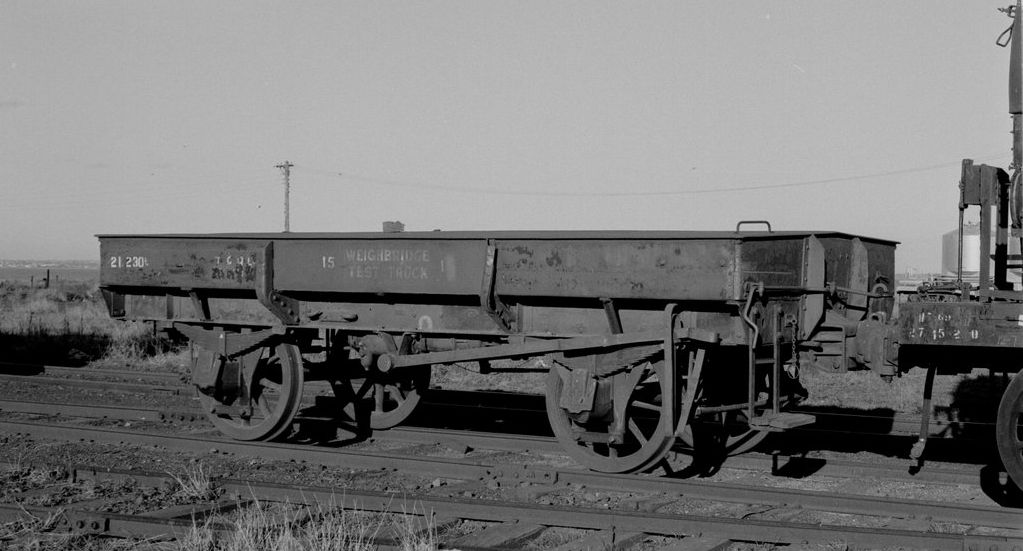

Early vehicles in this class were called 'Weighbridge Test Tenders' due to their heritage: ex steam engine tenders. Originally unclassed, in 1907 they were given the 'WTT' coding.
These vehicles were of poor condition by 1922. Theye were scrapped and replaced by comparable steam engine tenders in water truck service at the time. In fact one such truck was supplying water to one of the steam shovels, then in operation at the Manor ballast quarry.
Additional WTTs were converted ex _IB_ wagons in 1945. As these vehicles were all hook and screw coupled stock most were scrapped in the mid 1950's. For quick replacement, some wagons had the undergear chopped off and the bodies placed onto scrap underframes already fitted with auto-couplers.
In the late 1950's more WTT trucks were built; with concreted ends and open mid sections in which were placed 2 layers of 56lb (pound) weights laid across the floor.
Some WTT wagons were assigned to major stations with weighbridges.: Port Melbourne, Tottenham, Melbourne Yard, Castlemaine, Bendigo, Korumburra, Maryborough, Ballarat, Dimboola and Geelong to name most of them. It appears that the assigned WTT's were used to check the weighbridge accuracy whilst the mobile vehicles were used for actual calibration.
The removable weight WTT's with the 56lb weights toured the country calibrating weighbridges. This maintenance was occompanied by a _W__ sleeper van for accommodation.
Weighbridges saw little use from the late 1970's.
A big problem with the vehicles was the variation in tare weight due to trapped moisture, rust and the addition/removal of equipment without authorisation.